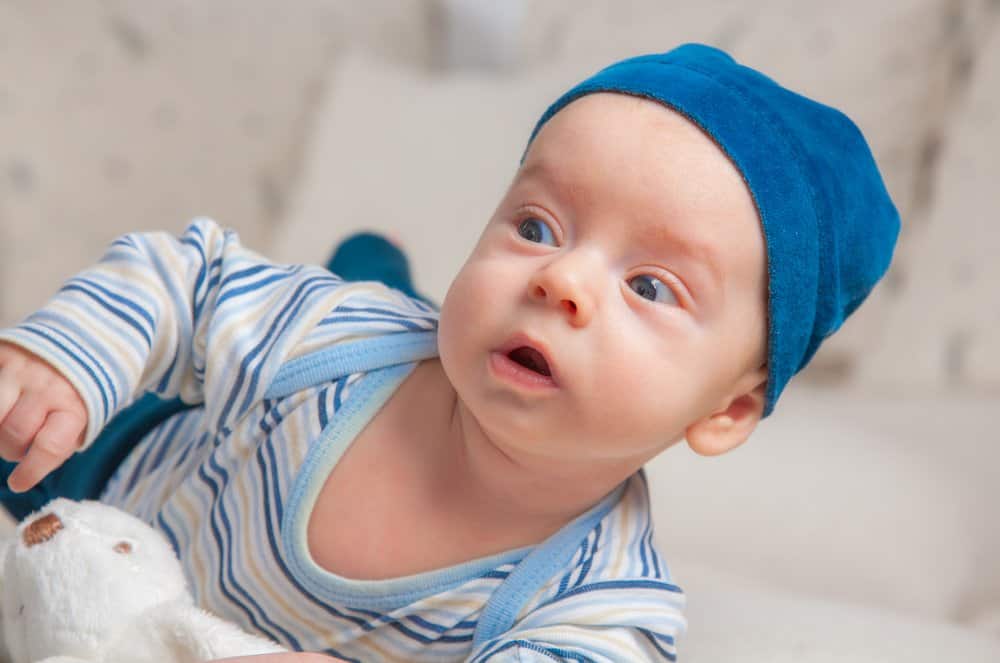A baby spends the prenatal portion of their life cocooning in their mother’s womb, where they feel safe, sound, and warm. And so it comes as no surprise that our little ones crave this safe space as soon as they leave it. When you swaddle your newborn baby or young infant, you help them retrieve these joyous memories, allowing them to sleep while feeling calm and protected.
But babies can’t swaddle forever, and sooner or later it’ll be time for your little one to transition into wearing regular bedclothes. In this article, we go through the different ways to successfully transition your baby out of the swaddle, giving you some tips and tricks along the way.
What Is Swaddling?

To swaddle a newborn baby is to wrap them up in a blanket or cloth while leaving their head exposed.
Swaddling a newborn helps keeps them safe by restricting their movements as they rest. It’s also a great way to prevent distress caused by the Moro reflex, a normal reflex response that babies experience in their early months of life. Swaddling also prevents babies from scratching themselves in their sleep while significantly reducing their crying and fussing spells.
Swaddling ensures that your little one’s arms and legs remain by their sides, creating a warm and blanketed embrace comparable to a mother’s womb. You can also swaddle a baby using a sleep sack or a Velcro swaddle, and these clever devices can help simplify the swaddling process. Benefits aside, it’s crucial that you learn to swaddle your baby the right way, as swaddling poses some risks, too.
At What Age Should I Stop Swaddling My Baby?
Generally speaking, a baby will grow out of their need to be swaddled once they complete their fourth trimester, which occurs 3 months after birth. However, they may be ready to forgo the swaddle in as early as 2 months or as late as 5 months. It all depends on their level of development throughout these tender months.
For this reason, it’s best to look out for the signs that your baby is ready for a swaddle transition rather than to base the timeline on their age alone.
Signs Your Baby Is Ready for a Swaddle Transition

As your baby grows and develops new skills, they will begin to show signs that they are ready to transition out of swaddling. Below are some of the most telling signs that you can start implementing a swaddle transition plan.
Your Baby Can Roll Over on Their Own
Every baby is different, but most begin to strengthen their neck and stomach muscles around 3-months-old. By the time they are 6-months-old, they generally know how to roll over in both directions.
However, you’ll want to stop swaddling them long before this happens, as it can be dangerous for a swaddled baby to roll onto their stomach at night. Once your baby shows signs of strength, you can slowly begin the swaddle transition.
Your Baby Can Break Out of Their Swaddle
When swaddling your baby, you want to swaddle them snuggly but not too snuggly. After all, your little one should be able to break free from their swaddle once they muster up enough strength. If your baby is strong enough to break free from their swaddle, this is a clear sign that they would rather sleep with their arms out.
Your Baby Fusses and Cries While Being Swaddled
Some babies love to be swaddled, and others will fight the swaddle from day one. In the end, your baby will be very vocal if they do not want to be swaddled. Swaddling is meant to make your baby feel safe and relaxed. And so, if they begin to cry and fuss during this process, it could be time to say goodbye to the swaddle.
Your Baby Is Waking up More Frequently Than They Used To
You’ll know it’s time for a swaddle transition when your baby stops sleeping soundly in their swaddle. If your little one no longer sleeps through their naps or continuously wakes up at night, when they used to sleep peacefully, they could be showing you that their swaddle no longer brings them comfort.
How to Transition Out of Swaddling
There is no right way to transition out of swaddling, as every baby works at their own pace. It can take anywhere from a few days to a few weeks to complete this transition — although some babies may complete their swaddle transition in just one night.
We’ve listed 4 of the most popular swaddle transition methods below. By using one of these methods (or combining a few), you and your little angel can wave goodbye to the swaddle in no time.
1. Overnight
Ditching the swaddle overnight can be quite a shock, which is why this method is best used on babies who exhibit self-soothing qualities. It can also be appropriate for babies who constantly show signs of not wanting to be swaddled.
It’s also the best method to use if your baby suddenly learns to roll over, seeing as it is not safe to swaddle a baby once they learn this milestone.
If all goes well, your little one will forget about the swaddle within a few days. However, keep in mind that when you abruptly change your baby’s sleeping style, they may cry and fuss more than usual. This can cause you to lose a bit of sleep, but that’s a small price to pay for a quick and easy swaddle transition.
2. Little by Little
Your baby may enjoy sleeping swaddle-free for a few hours a night, only to wake up in a fussy mood. Should this be the case, transitioning your baby out of the swaddle, little by little, could be key.
To do this, put your baby to sleep without swaddling them. Should your baby begin to cry at any point of the night, console them and put them back to sleep in a swaddle. Although this can take some time, your little one will eventually sleep through the night without needing to be swaddled.
3. One Arm Out
If your baby seems to enjoy the swaddle, you can slowly prep them for a swaddle transition by taking one arm out at a time. First, wrap them up in a swaddle, leaving one arm out. Do this for a few nights in a row. If your baby continues to sleep soundly, swaddle them with both arms out a few nights after.
Once your baby is used to sleeping with both arms out, you can ditch the swaddle altogether.
To find out how to swaddle your baby with their arms out, take a look at this video by CloudMom.
4. Both Arms Out
If you suspect that your baby is ready for a quick swaddle transition, you can choose to immediately swaddle them with both arms free. Should they wake up throughout the night, fussing and crying, wrap them back up, leaving one arm exposed.
Tips for an Easy Swaddle Transition
Sleeping in a swaddle offers your baby a lot of comfort and warmth. So it’s only normal for them to feel like a fish out of water during the first few nights of a swaddle transition. The following tips can help your baby feel at ease during this transitional phase.
Start During Nap Time
Get your baby used to sleeping swaddle-free by implementing one of the above methods during nap time. Once they have taken to their new sleeping regimen, implement it at night, too.
Dim the Lights
To help your baby self-soothe, ensure that you put them to sleep in a low-light environment.
Consider Using White Noise
If you have pets or other children, it may be difficult to create a quiet environment for your baby to sleep in. Playing white noise in the background can help your little one fall asleep faster, as white noise can block out the sounds of a hectic home. To determine if the use of white noise is a good option for your baby, take a look at this article by Healthline.
Consult a Doctor
A swaddle transition is best when completed promptly. So, talk to your doctor if your little one refuses to sleep without their swaddle, despite showing signs that they are ready to sleep arms-free.
What Comes After Swaddling?
Once your baby has completed their swaddle transition, you’ll want to put them to sleep in a pair of pajamas. But while the type of pajamas you choose is up to you, it’s important to remember that babies are prone to over-heating, which is why choosing a breathable fabric is recommended.
Should you live in a colder climate, you may also choose to place your baby in a wearable blanket or sleep sack overnight- just make sure to choose an option that allows for your child’s arms to be uncovered.
Last Thoughts

There’s nothing more rewarding than watching your baby conquer their developmental milestones like a champ.
Your little one may spend the first few months of their life sleeping soundly in a swaddle, only to grow out of it in the blink of an eye. Although some babies might have more difficulty parting with the swaddle, they’ll eventually catch on and begin to enjoy sleeping arms-free.
We wish you the best of luck during this transitional period and hope that your sleep schedule gets back to normal as soon as possible.
